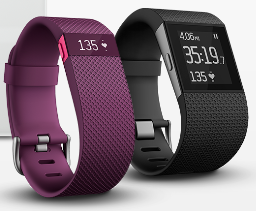No Sanctions for Failing to Preserve Cell Phone Records and Call Logs: eDiscovery Case Law
In Dotson, et al. v. Edmonson, et. al., No. 16-15371 (E.D. La. Jan. 22, 2018), Louisiana District Judge Susie Morgan denied the plaintiff’s motion in limine seeking sanctions for spoliation of evidence, finding that the plaintiff had “not met his burden of establishing that the Trooper Defendants had a duty to preserve” cell phone records and call logs from the evening of October 7, 2015 from Louisiana State Police (LSP) issued cell phones that were used that night by LSP officers during an undercover operation, or that their destruction of the evidence was intentional.
Case Background
In this case related to a civil suit over a drug bust involving the plaintiff, the defendants provided interrogatory responses deposition testimony which indicated that LSP troopers relied on their LSP-issued (or LSP-funded) cell phones to communicate during the course of operations in general, and specifically on the night of October 7, 2015. The plaintiff asserted that this “establishes the existence of electronically stored information such as call logs and text messages on those cell phones” and argued that, as early as October 7, 2016, when the defendants were named in an article on nola.com and the case was filed, the defendants and the LSP were on notice that litigation was pending, and thus should have known that any ESI relating to the investigatory stop and arrest of the plaintiff was required to be preserved. Nonetheless, Defendants traded in their cell phones one month after Plaintiff filed his suit.
The plaintiff issued multiple discovery requests and subpoenas, and filed several motions to compel in efforts to obtain the call logs and text messages and develop an understanding of the officers’ movements and observations on the night of the arrest to no avail and claimed the loss of these records prejudiced his case, because the movements and communications among these officers were crucial to establishing whether reasonable suspicion existed to stop the plaintiff. In response, the defendants argued that the plaintiff’s proposed remedy unfairly targeted Defendant Bodet (one of the Trooper Defendants), “as the Fifth Circuit makes clear that sanctions for spoliation should be taken against the alleged spoliator” and argued there is no evidence to suggest that Bodet acted in bad faith, or that he should have known of a need to preserve any electronically stored information on his phone.
Judge’s Ruling
Citing Rule 37(e), Judge Morgan stated: “The Plaintiff has not met his burden of establishing that the Trooper Defendants had a duty to preserve the electronically stored information related to the cell phone records from October 7, 2015 at the time the information was destroyed or that their destruction of the evidence was intentional. The Court will not provide the requested instruction to the jury based on an adverse inference.”
However, Judge Morgan excluded the Trooper Defendants from speculating at trial that they “may have” called a particular trooper based on deposition testimony to the contrary. She also stated that “the Court’s ruling does not preclude the Plaintiff from eliciting testimony regarding the loss of the cell phone records and text messages”, nor did it prohibit questioning “regarding the cell phone record preservation policies of the Louisiana State Police, as such testimony is relevant and its relevance is not outweighed by the risk of undue prejudice.”
So, what do you think? Should the defendants have received some sanctions? Please share any comments you might have or if you’d like to know more about a particular topic.

Case opinion link courtesy of eDiscovery Assistant.
Sponsor: This blog is sponsored by CloudNine, which is a data and legal discovery technology company with proven expertise in simplifying and automating the discovery of data for audits, investigations, and litigation. Used by legal and business customers worldwide including more than 50 of the top 250 Am Law firms and many of the world’s leading corporations, CloudNine’s eDiscovery automation software and services help customers gain insight and intelligence on electronic data.
Disclaimer: The views represented herein are exclusively the views of the author, and do not necessarily represent the views held by CloudNine. eDiscovery Daily is made available by CloudNine solely for educational purposes to provide general information about general eDiscovery principles and not to provide specific legal advice applicable to any particular circumstance. eDiscovery Daily should not be used as a substitute for competent legal advice from a lawyer you have retained and who has agreed to represent you.




